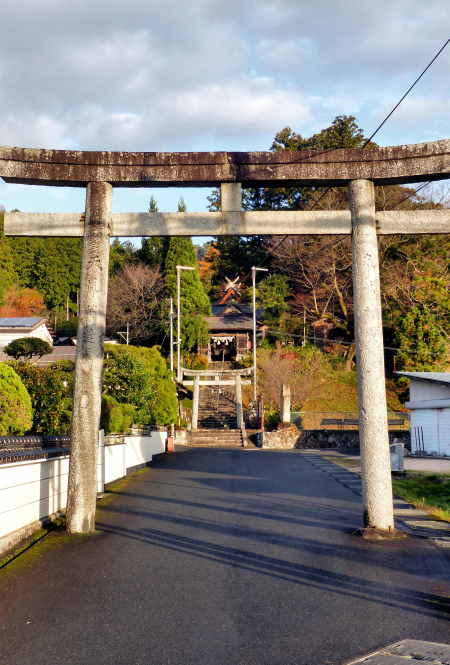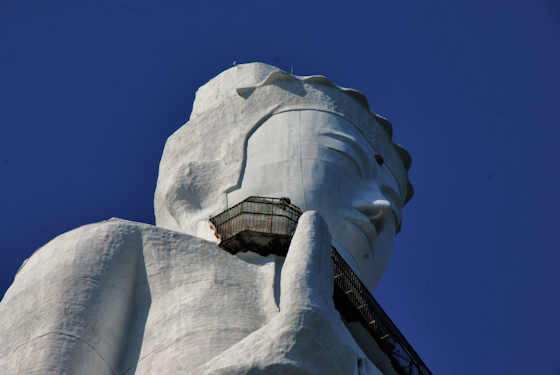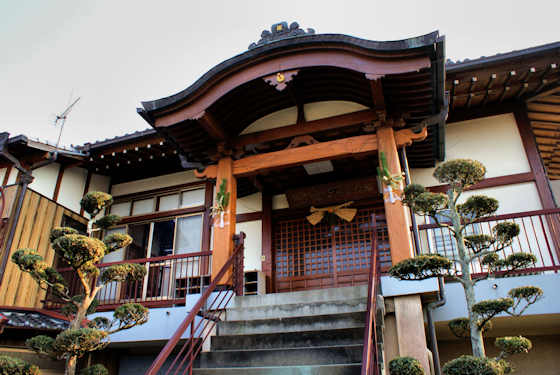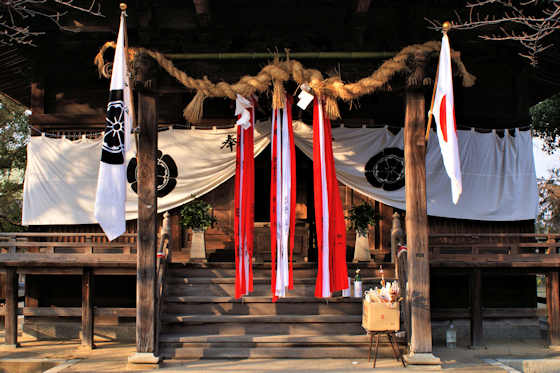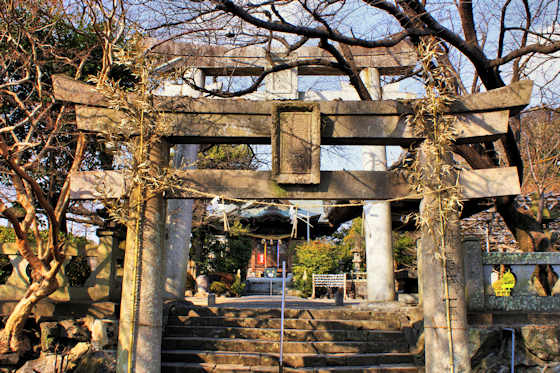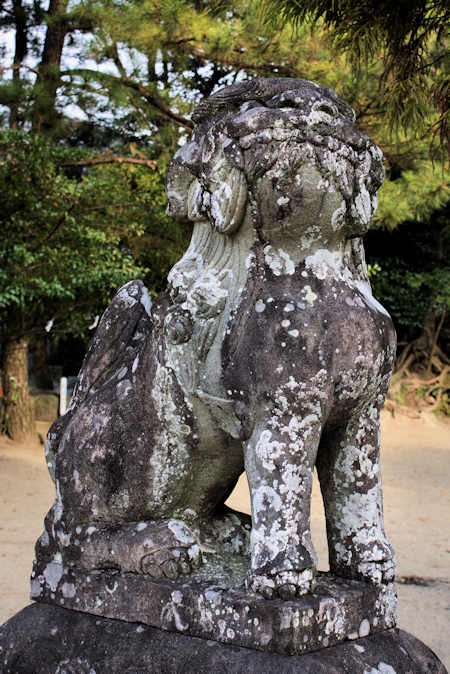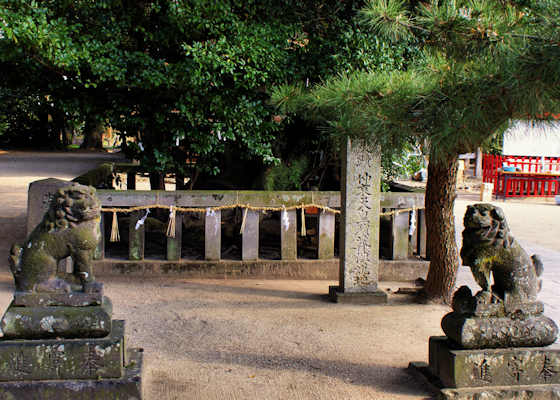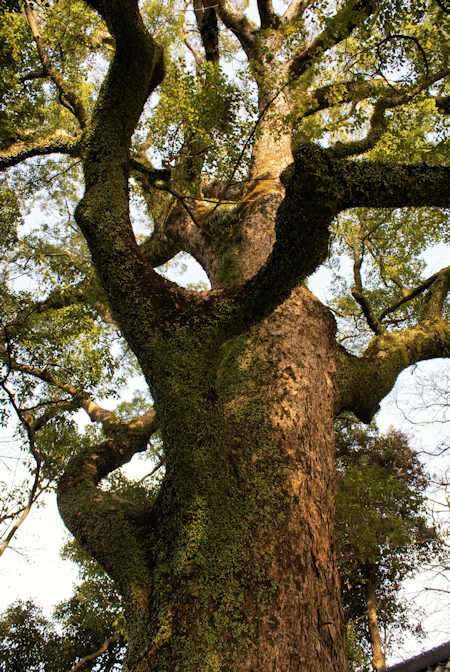Tuesday, November 8, 2022
Mudo-ji Temple 6 Kyushu Fudo Myoo Pilgrimage
Sunday, November 6, 2022
Igatake Shrine
Igatake Shrine
Thursday, November 3, 2022
Disappeared Japan Awaji World Peace Kannon
Awaji World Peace Kannon
Wednesday, November 2, 2022
Amagi to Tosu. Day 55 Walking Around Kyushu
Saturday, January 4th 2014
It's still dark when I leave my hotel and walk to Kurume Station. I take a train north across the river towards Amagi where I will continue my pilgrimage, but first, get off after a couple of stops at Kitano Station. A few hundred meters from the station is a shrine I want to visit, a branch of Kitano Tenmangu, the first shrine to Sugawara Michizane in Kyoto.
The village here is called Kitano after the shrine's name. That is not unusual, many places in Japan are named after the local shrine or temple. It is quite a big shrine and has a single statue of a white horse, fairly common at shrines, but also has three orange horses,... quite unusual. The walls of the corridors of the shrine are covered with examples of calligraphy, something the Kami Tenjin, the enshrined spirit of Michizane, is known for.
I jumped back on a train to the last station of the line, Amagi, and when I arrive the sun is up promising another fine day. I had some trouble finding the first pilgrimage temple of the day, Kotokuin,number 7 in the order they are listed. It was located in a suburban area a little north of the station but was not a large temple with a typical large curved roof, but a small single-storey building, so I could not see it from a distance. I asked several passers-by but had no luck. Often in Japan if a place is not famous then even people who live nearby will not know where it is. I find it eventually and there is not much to see. My route now heads west across the wide plain.
Japan is often characterized as being a mountainous country, and while that is true, there are plenty of wide-open flat areas, this being one of them. While I haven't yet traveled in many parts of Japan, so far in my experience Kyushu seems to have a lot of these flat areas. It is of course mostly farmland, and several times I pass near huge structure with silos. The fields and paddies are also interspersed with small settlements, marked by trees, the largest of the trees often indicate a shrine, none of the ones I visited had any visitors though. The shrines I visited were Ushiki Tenmangu, Nomachi Takano, Shisojima Tenmangu, Otoguma Tenmangu, and Yokoguma Hayabusataka.
By lunchtime, it is becoming more urban and I reach temple number 3, Nyoirinji, and it is very busy. It's not a very big temple but is obviously very popular. The most noticeable thing is a large number of frog statues. They are everywhere. In the car park are a line of large metal ones covered in what appears to be graffiti, but what is in fact prayers and wishes. I had hoped to meet with the head priest of the temple, the father of the young priest I had met at temple number 93 some 53 walking days ago, but he was obviously very busy. The grounds did have a nice walk with many fines statues so I leisurely explored before heading off.
I headed south, now into urban Ogori, and walked parallel to several train lines as well as the main road and expressway. There were several larger shrines to stop at and explore, Rikitake Kamado, Misetaireiseki, and Ogori Susano. I pass under the East-West expressway and turn west parallel to it. At a big shrine I am surprised to find many statues of monkeys, not the Three Wise Monkeys, but mostly mother monkeys in red hats holding baby monkeys. It's a Hiyoshi Shrine, a branch of the famous shrine at the base of Mount Hiei whose guardian animal is the monkey.
In Tashiro I find the last pilgrimage temple of the day, Fudo-in, number 4. It took some finding as it is a small concrete structure in the middle of a crowded suburban area. Nothing much to see except for a nice statue of Fudo Myo O, the temple's namesake. It's now getting late and I head south back toward Kurume. I get as far as Tosu before deciding to call it a day
As usual, I took photos of the many unique manhole covers I saw along the way.








